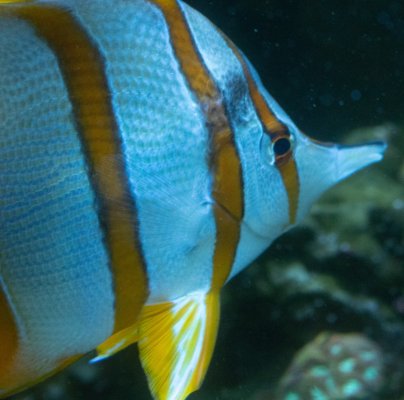All,
Over the past two years or so, I've come across dozens of cases on the fish disease forum here of an issue with clownfish that we have not been able to identify. I've never seen it on any clownfish I've had myself, but the issue seems most common on designer clowns, which I don't work with.
Basically, the clownfish show a reddish/dark lesion under the skin that is only visible on the white portions of the fish. The lesions don't seem to break through to the surface like Uronema does. Sometimes the fish dies (but may have had other issues?) and sometimes the fish gets better, but a lot of these cases are "lost to follow up" where the original poster never gets back to us with the outcome.
For the time being, I'm going to call it CBD - Clownfish Bruising Disease. It does not seem to be highly contagious, if at all. External bath treatments are unlikely to help, as the discoloration is clearly deep down in the muscle tissue.
Here are some pictures I've collected here:



Thanks,
Jay
10/22/23: update. A photo came through the forum that showed a newly acquired copperband butterflyfish with a similar lesion. This fish died a few days later. It likely had internal Uronema. It may be that in some fish, the uronema protozoans don't erupt through the fish's skin, and can only be seen in the translucent areas of the body (such as below a white stripe).
#fishmedic
9/12/24 edit:
I should reinforce this: although I call this a “bruise” there is NO evidence that this is caused by an injury….it just looks like a bruise due to the subdermal bleeding.
Over the past two years or so, I've come across dozens of cases on the fish disease forum here of an issue with clownfish that we have not been able to identify. I've never seen it on any clownfish I've had myself, but the issue seems most common on designer clowns, which I don't work with.
Basically, the clownfish show a reddish/dark lesion under the skin that is only visible on the white portions of the fish. The lesions don't seem to break through to the surface like Uronema does. Sometimes the fish dies (but may have had other issues?) and sometimes the fish gets better, but a lot of these cases are "lost to follow up" where the original poster never gets back to us with the outcome.
For the time being, I'm going to call it CBD - Clownfish Bruising Disease. It does not seem to be highly contagious, if at all. External bath treatments are unlikely to help, as the discoloration is clearly deep down in the muscle tissue.
Here are some pictures I've collected here:
Thanks,
Jay
10/22/23: update. A photo came through the forum that showed a newly acquired copperband butterflyfish with a similar lesion. This fish died a few days later. It likely had internal Uronema. It may be that in some fish, the uronema protozoans don't erupt through the fish's skin, and can only be seen in the translucent areas of the body (such as below a white stripe).
#fishmedic

9/12/24 edit:
I should reinforce this: although I call this a “bruise” there is NO evidence that this is caused by an injury….it just looks like a bruise due to the subdermal bleeding.
Last edited:

























